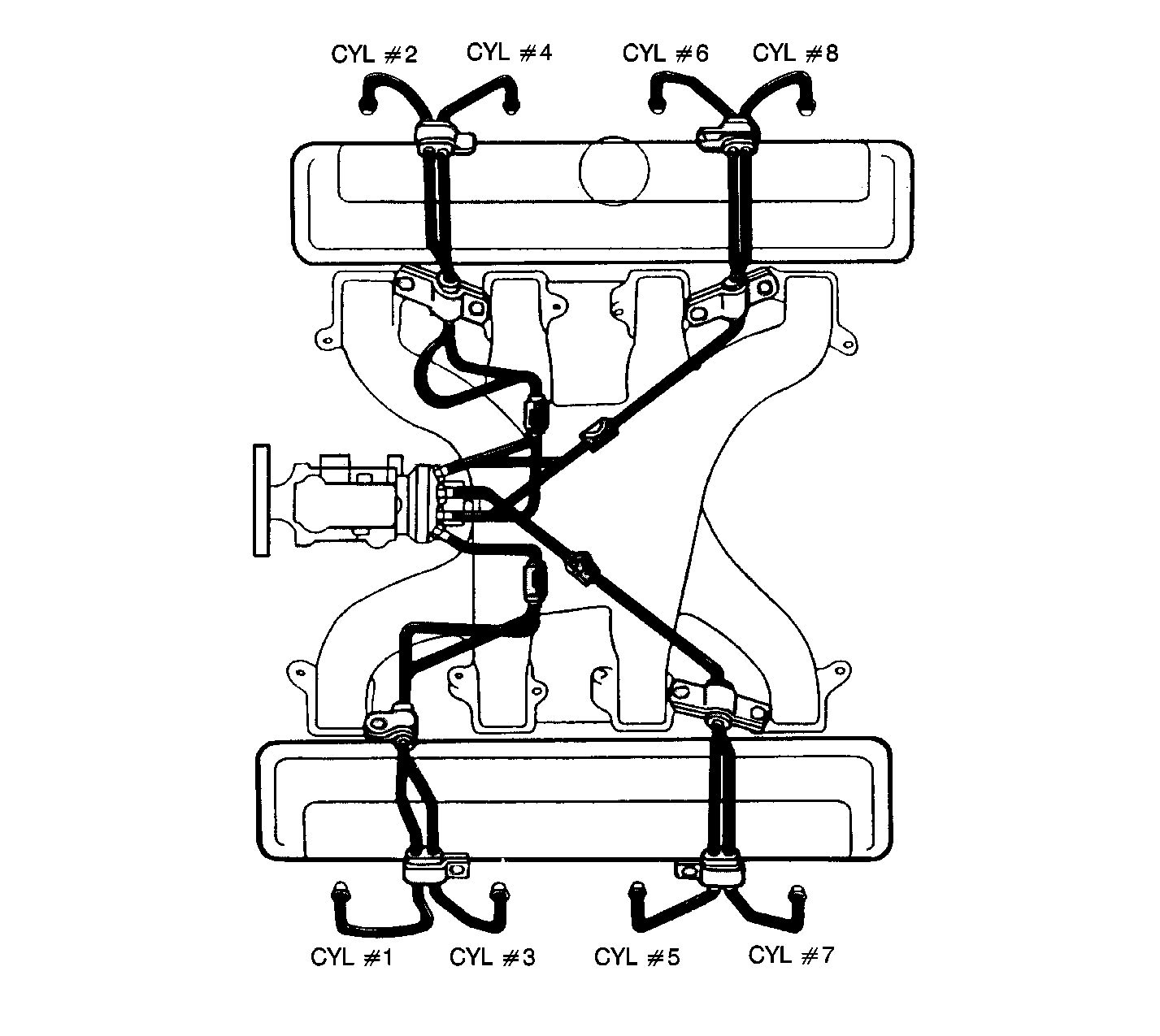
Circuit Description
The PCM has the ability to increase and decrease the amount of fuel to each cylinder in order to provide for a smooth idle operation. If the fuel correction amount exceeds the defined limits, DTC P0266 will set.
Conditions for Running the DTC
| • | The engine is at idle. |
| • | The engine coolant is at the normal temperatures. |
| • | The cylinder fault must be constant. |
Conditions for Setting the DTC
| • | The fuel correction amount exceeds the limits (internal to PCM). |
| • | All disgnostic set conditions met for 2 seconds. |
Conditions for Running the DTC
| • | The engine is at idle. |
| • | The engine coolant is at the normal temperatures. |
| • | The cylinder fault must be constant. |
Conditions for Setting the DTC
| • | The fuel correction amount exceeds the limits (internal to PCM). |
| • | All disgnostic set conditions met for 2 seconds. |
Action Taken When the DTC Sets
| • | The PCM will not illuminate the malfunction indicator lamp (MIL). |
| • | The PCM records the operating conditions at the time the diagnostic fails. This information is stored in the Failure Records. |
Conditions for Clearing the MIL/DTC
| • | A History DTC will clear after forty consecutive warm-up cycles, if this or any other emmision related diagnostic does not report any failures. |
| • | Use of a scan tool will clear the DTC codes. |
Diagnostic Aids
The injector balance test on the scan tool should be used in order to confirm the cylinder problems. The scan tool will cutout the specific cylinder requested. If the original complaint was multiple cylinder balance DTCs and the vehicle has a manual transmission, a dual mass flywheel could be at fault. If a cylinder balance fault has been detected and the engine has been running for a long time, the PCM might try to increase or decrease the fuel in the other cylinders in order to compensate for a rough idle. This may cause multiple cylinder balance DTCs to set. The scan tool snap shot mode can be used in order to properly identify the suspected cylinder. The most likely cause of cylinder balance DTCs are malfunctioning nozzles or engine mechanical (low compression) problems.
If multiple cylinder balance DTCs are set and no problem is found, check for the following:
| • | Pinched or restricted fuel feed lines between the fuel tank and the fuel injection pump |
| • | Restricted fuel filter |
| • | Fuel waxing |
A fuel system restriction could cause the fuel correction to exceed the limits.
Test Description
The number(s) below refer to the step number(s) on the Diagnostic Table.
Step | Action | Value(s) | Yes | No | ||||||
|---|---|---|---|---|---|---|---|---|---|---|
1 |
Important: Before clearing the DTCs, use the scan tool Capture Info to save freeze frame and failure records for reference. The control module's data is deleted once the Clear Info function is used. Did you perform the Powertrain On-Board Diagnostic (OBD) System Check? | -- | ||||||||
Is there an RPM drop in the suspected cylinder? | -- | |||||||||
3 | The DTC is intermittent.
Are there any additional DTCs stored? | -- | Go to the applicable DTC table | Go to Diagnostic Aids | ||||||
4 |
Did you perform a repair? | -- | ||||||||
5 |
Important: The new injection pump must be timed. Refer to Fuel Injection Pump Timing Adjustment . Replace the fuel injection pump. Refer to Fuel Injection Pump Replacement . Is the action complete? | -- | -- | |||||||
6 |
Does the scan tool indicate the diagnostic Passed? | -- | ||||||||
7 | Does the scan tool display any additional undiagnosed DTCs? | -- | Go to the applicable DTC table | System OK |
